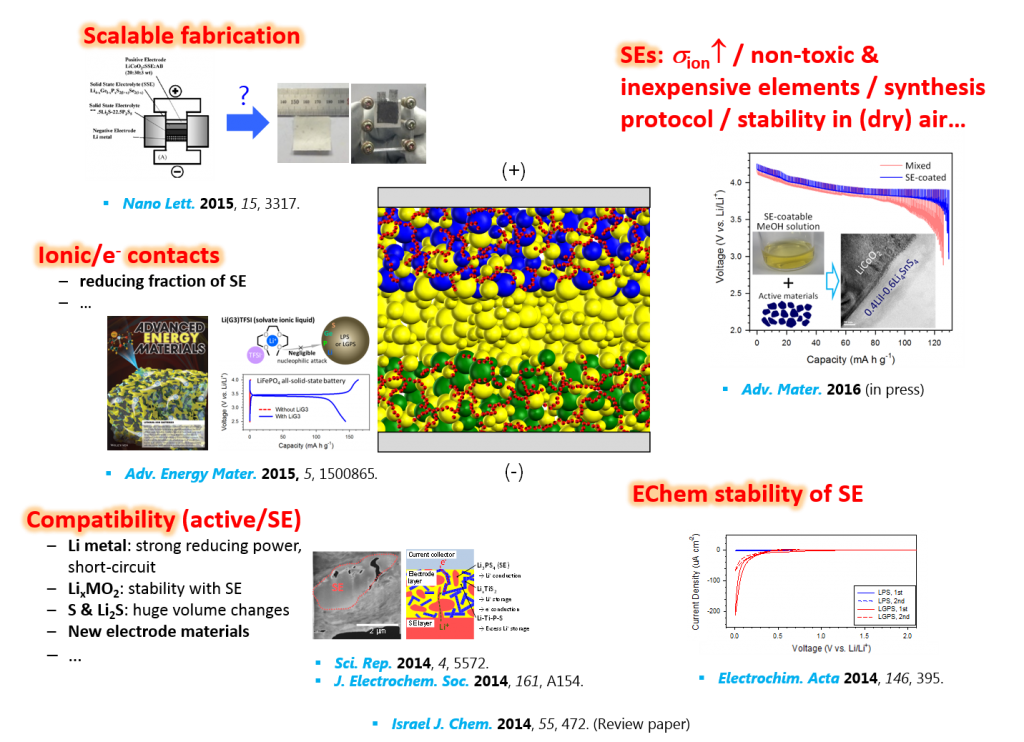Inorganic solid electrolytes are key components in the development of alternative types of rechargeable lithium batteries. In particular, the use of inorganic solid electrolytes can lead to ultimate safety by developing all-solid-state batteries. Thanks to recent developments of superionic conductors (10-2-10-4 S/cm) whose conductivity is comparable to that of conventional liquid electrolytes (~10-2 S/cm), a proof-of-concept of composite-type ‘bulk-type all-solid-state batteries’ has been demonstrated. The all-solid-state batteries do not suffer from any safety concern such as solvent leakage and flammability of liquid electrolytes with providing high energy density which is comparable to that of the sate-of-the-art conventional lithium-ion batteries.
Refs: “무기계 고체전해질 및 벌크형 리튬 전고체전지 기술 동향“ E. Chem Magazine 2015, 6, 35; “Issues and Challenges for Bulk-Type All-Solid-State Rechargeable Batteries Using Sulfide Solid Electrolytes” Israel Journal of Chemistry 2015, 55, 472.
Several challenging issues must be addressed for commercialization of all-solid-state batteries; performances of solid electrolytes (i.e., conductivities, air-stability, electrochemical stability), compatibility of solid electrolytes with active materials, electronic and ionic contacts with active materials, scalable fabrication.
Industries are aggressive in order to deploy all-solid-state lithium batteries to the electric vehicles (EVs).
Several prototype all-solid-state lithium batteries have been announced recently.




